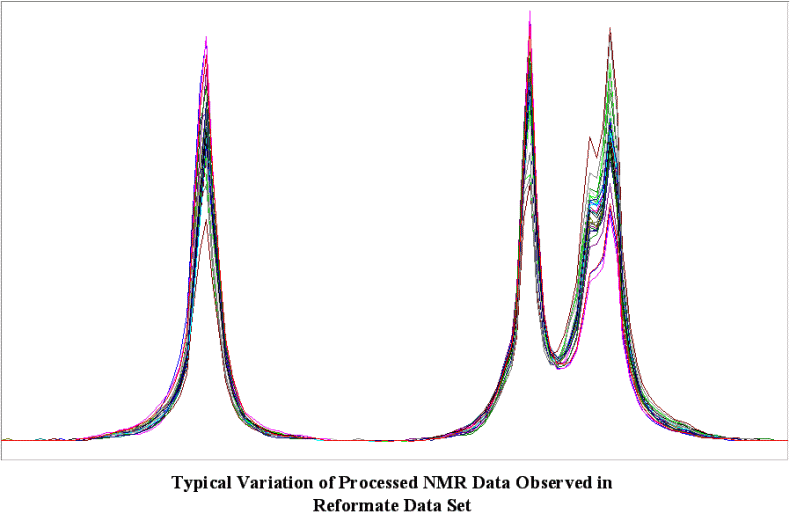NMR Based Reformer and Platformer Control
See Official Case Study of British Petroleum Platformer Application (pdf)
The second on-line application of process 1H NMR was reformer control based on following RON, MON, benzene and total aromatics on reformer product.
Below is a summary of the on-line application which has been operational for two years. None of the models have been modified in over a year and are within agreed upon reproducibility when compared to laboratory measurements.
RON has been successfully modeled and the models have proved to be extremely robust and are proven to be linear well outside the model coverage range.
Below is an example of NMR RON predictions that held even 2+ octane numbers outside the model experience.

Below is one month of NMR RON Prediction compared to Lab Analysis
Below is a slide showing the typical variability that is observed in reformate/platformate samples as well as a description of the various chemistry that is observed in the 1H NMR spectrum.

Here is the typical variability as related to the RON value of the sample – it can be seen that the RON (and the MON for that matter) are related to the total aromatic content as well as to the variance in the type of aromatics (observed through the alpha-proton region). A smaller part is played by the variance in CH3/CH2 ratios.


Below is a typical RON model showing the actual and predicted RON values.

Here is a typical day of RON and MON variability in the process observed by NMR.

For brevity it can be said that the MON model behaves very similarly to the RON models and typical prediction errors are in the range of 0.25 octane numbers. Below is a plot of MON NMR predictions versus lab data for one month.

Benzene is the most important parameter being measured in this application. The slides below show the NMR performance for predicting this parameter. The slides show a one month comparison of NMR predicted Benzene content with the laboratory benzene measurement.

Below is a plot of the current models performance in PLS regression.

Finally, a typical days variation in benzene content as observed by NMR.
